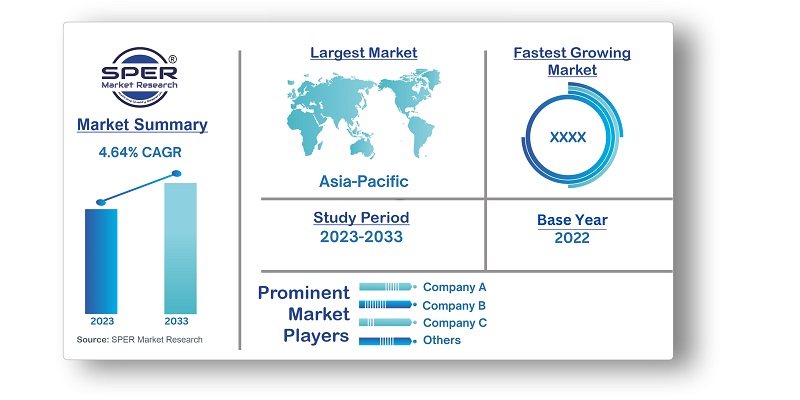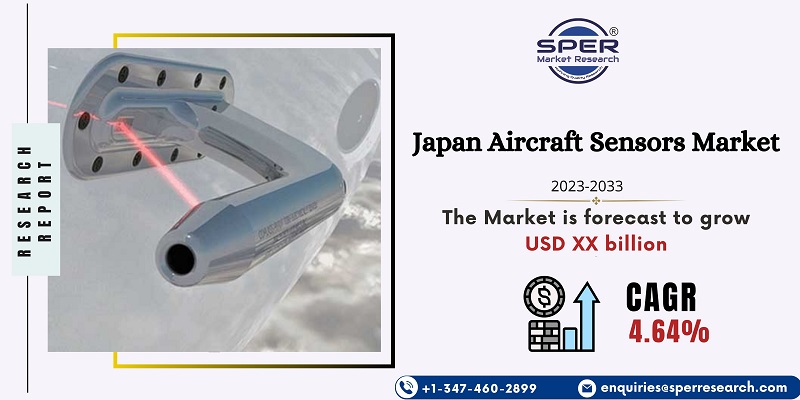
Japan Aircraft Sensors Market Growth, Size, Trends, Demand, Revenue, Share ands Future Outlook
Japan Aircraft Sensors Market Size- By Aircraft Type, By Sensor Type, By Connectivity, By Application, By End User- Regional Outlook, Competitive Strategies and Segment Forecast to 2033
| Published: Dec-2023 | Report ID: AERO2338 | Pages: 1 - 108 | Formats*: |
| Category : Aerospace and Defence | |||


| Report Metric | Details |
| Market size available for years | 2019-2033 |
| Base year considered | 2022 |
| Forecast period | 2023-2033 |
| Segments covered | By Type, By Weight, By Material |
| Regions covered | By Aircraft Type, By Sensor Type, By Connectivity, By Application, By End Use |
| Companies Covered | Honeywell Aerospace Japan, Japan Aviation Electronics Ltd. (JAEL), Murata Manufacturing Co., Ltd. |
- Aerospace Manufacturers
- Airlines and Air Operators
- Defense and Military Organizations
- Aviation Regulatory Authorities
- Research and Development Institutions
| By Aircraft Type: |
|
| By Sensor Type: |
|
| By Connectivity: |
|
| By Application: |
|
| By End Use: |
|
- Japan Aircraft Sensors Market Size (FY’2023-FY’2033)
- Overview of Japan Aircraft Sensors Market
- Segmentation of Japan Aircraft Sensors Market By Aircraft Type (Fixed Wings, Rotorcraft, Others)
- Segmentation of Japan Aircraft Sensors Market By Sensor Type (Proximity Sensors, Temperature Sensors, Optical Sensors, Pressure Sensors, Force Sensors, Flow Sensors, Radar Sensors, Others)
- Segmentation of Japan Aircraft Sensors Market By Connectivity (Wired Sensors, Wireless Sensors)
- Segmentation of Japan Aircraft Sensors Market By Application (Flight Decks, Landing Gear Systems, Weapon Systems, Fuel, Hydraulic, and Pneumatic Systems, Engine/Propulsion, Cabin and Cargo Environmental Controls, Aerostructures and Flight Control, Others)
- Segmentation of Japan Aircraft Sensors Market By End Use (OEM, Aftermarket)
- Expansion Analysis of Japan Aircraft Sensors Market
- Problems and Obstacles in Japan Aircraft Sensors Market
- Competitive Landscape in the Japan Aircraft Sensors Market
- Impact of COVID-19 and Demonetization on Japan Aircraft Sensors Market
- Details on Current Investment in Japan Aircraft Sensors Market
- Competitive Analysis of Japan Aircraft Sensors Market
- Prominent Players in the Japan Aircraft Sensors Market
- SWOT Analysis of Japan Aircraft Sensors Market
- Japan Aircraft Sensors Market Future Outlook and Projections (FY’2023-FY’2033)
- Recommendations from Analyst
1.1. Scope of the report1.2. Market segment analysis
2.1. Research data source
2.1.1. Secondary Data2.1.2. Primary Data2.1.3. SPER’s internal database2.1.4. Premium insight from KOL’s
2.2. Market size estimation
2.2.1. Top-down and Bottom-up approach
2.3. Data triangulation
4.1. Driver, Restraint, Opportunity and Challenges analysis
4.1.1. Drivers4.1.2. Restraints4.1.3. Opportunities4.1.4. Challenges
4.2. COVID-19 Impacts of the Japan Aircraft Sensors Market
5.1. SWOT Analysis
5.1.1. Strengths5.1.2. Weaknesses5.1.3. Opportunities5.1.4. Threats
5.2. PESTEL Analysis
5.2.1. Political Landscape5.2.2. Economic Landscape5.2.3. Social Landscape5.2.4. Technological Landscape5.2.5. Environmental Landscape5.2.6. Legal Landscape
5.3. PORTER’s Five Forces
5.3.1. Bargaining power of suppliers5.3.2. Bargaining power of buyers5.3.3. Threat of Substitute5.3.4. Threat of new entrant5.3.5. Competitive rivalry
5.4. Heat Map Analysis
6.1. Japan Aircraft Sensors Market Manufacturing Base Distribution, Sales Area, Product Type6.2. Mergers & Acquisitions, Partnerships, Product Launch, and Collaboration in Japan Aircraft Sensors Market
7.1. Japan Aircraft Sensors Market Value Share and Forecast, By Aircraft Type, 2023-20337.2. Fixed Wings7.3. Rotorcraft7.4. Others
8.1. Japan Aircraft Sensors Market Value Share and Forecast, By Sensor Type, 2023-20338.2. Proximity Sensors8.3. Temperature Sensors8.4. Optical Sensors8.5. Pressure Sensors8.6. Force Sensors8.7. Flow Sensors8.8. Radar Sensors8.9. Others
9.1. Japan Aircraft Sensors Market Value Share and Forecast, By Connectivity, 2023-20339.2. Wired Sensors9.3. Wireless Sensors
10.1. Japan Aircraft Sensors Market Value Share and Forecast, By Application, 2023-203310.2. Flight Decks10.3. Landing Gear Systems10.4. Weapon Systems10.5. Fuel, Hydraulic, and Pneumatic Systems10.6. Engine/Propulsion10.7. Cabin and Cargo Environmental Controls10.8. Aerostructures and Flight Control10.9. Others
11.1. Japan Aircraft Sensors Market Value Share and Forecast, By End Use, 2023-203311.2. OEM11.3. Aftermarket
12.1. Japan Aircraft Sensors Market Size and Market Share
13.1. Japan Aircraft Sensors Market Size and Market Share By Aircraft Type (2019-2026)13.2. Japan Aircraft Sensors Market Size and Market Share By Aircraft Type (2027-2033)
14.1. Japan Aircraft Sensors Market Size and Market Share By Sensor Type (2019-2026)14.2. Japan Aircraft Sensors Market Size and Market Share By Sensor Type (2027-2033)
15.1. Japan Aircraft Sensors Market Size and Market Share By Connectivity (2019-2026)15.2. Japan Aircraft Sensors Market Size and Market Share By Connectivity (2027-2033)
16.1. Japan Aircraft Sensors Market Size and Market Share By Application (2019-2026)16.2. Japan Aircraft Sensors Market Size and Market Share By Application (2027-2033)
17.1. Japan Aircraft Sensors Market Size and Market Share By End Use (2019-2026)17.2. Japan Aircraft Sensors Market Size and Market Share By End Use (2027-2033)
18.1. Japan Aircraft Sensors Market Size and Market Share By Region (2019-2026)18.2. Japan Aircraft Sensors Market Size and Market Share By Region (2027-2033)18.3. Kanto Region18.4. Kansai/Kinki Region18.5. Central/ Chubu Region18.6. Kyushu-Okinawa Region18.7. Tohoku Region18.8. Chugoku Region18.9. Hokkaido Region18.10. Shikoku Region
19.1. Company A
19.1.1. Company details19.1.2. Financial outlook19.1.3. Product summary19.1.4. Recent developments
19.2. Company B
19.2.1. Company details19.2.2. Financial outlook19.2.3. Product summary19.2.4. Recent developments
19.3. Company C
19.3.1. Company details19.3.2. Financial outlook19.3.3. Product summary19.3.4. Recent developments
SPER Market Research’s methodology uses great emphasis on primary research to ensure that the market intelligence insights are up to date, reliable and accurate. Primary interviews are done with players involved in each phase of a supply chain to analyze the market forecasting. The secondary research method is used to help you fully understand how the future markets and the spending patterns look likes.
The report is based on in-depth qualitative and quantitative analysis of the Product Market. The quantitative analysis involves the application of various projection and sampling techniques. The qualitative analysis involves primary interviews, surveys, and vendor briefings. The data gathered as a result of these processes are validated through experts opinion. Our research methodology entails an ideal mixture of primary and secondary initiatives.



Frequently Asked Questions About This Report
PLACE AN ORDER
Year End Discount
Sample Report
Pre-Purchase Inquiry
NEED CUSTOMIZATION?
Request CustomizationCALL OR EMAIL US
100% Secure Payment






Related Reports
Our Global Clients
Our data-driven insights have influenced the strategy of 200+ reputed companies across the globe.






















